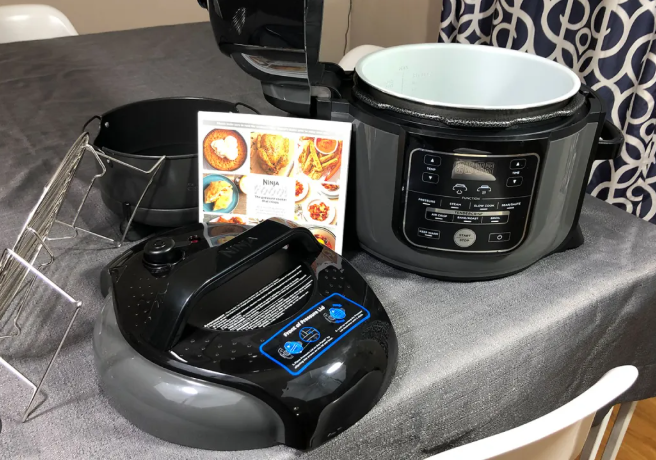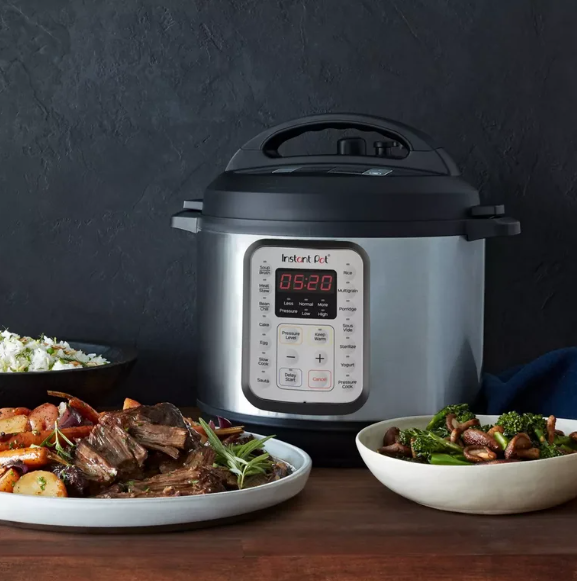In the debate of electric cooker vs gas cooker, understanding how to use an electric cooker can help you decide which appliance best suits your kitchen in 2025. Electric cookers, often called rice cookers or multi-cookers, simplify cooking with electric cooker by preparing rice, soups, steamed vegetables, and more with minimal effort. Unlike gas cookers, which require an open flame and precise heat control, electric cookers offer consistent temperatures, user-friendly interfaces, and often a portable electric cooker design, making them ideal for beginners, small households, or travelers. This electric cooker user guide focuses on electric cookers while comparing them to gas cookers in the electric cooker vs gas cooker context. For more insights, explore our electric cooking tips.
This electric cooker vs gas cooker guide covers preparation, a step-by-step cooking process including how to cook rice in an electric cooker, maintenance tips, troubleshooting advice, and answers to common questions. Whether you choose an electric or gas cooker, this beginner-friendly guide ensures you cook confidently. Always consult your model’s manual for specific instructions. Let’s explore how electric cookers stack up in 2025!
What You Need Before Using
Before diving into the electric cooker vs gas cooker comparison, proper preparation is essential for using an electric cooker effectively. Your electric cooker typically includes a main unit, a non-stick inner pot, lid, measuring cup, and spatula. Some models include a steaming basket, unlike gas cookers, which often require separate pots or burners. If accessories are missing, purchase compatible ones from the manufacturer to ensure performance and electric cooker safety.
Check your cooker’s power compatibility—most electric cookers use 120V or 220V outlets, depending on your region, while gas cookers rely on a gas supply, which may not be available everywhere. Verify the capacity: 3-5 cups for individuals or small households, 8-10 cups for families. Choosing the right size prevents spills, a common issue with gas cookers if pots overflow. For safety, place the electric cooker on a stable, heat-resistant surface, away from water to avoid electrical hazards—unlike gas cookers, which pose flame-related risks. Inspect the power cord for damage and replace if frayed. Use in a well-ventilated area, and never leave it unattended.

Before first use, clean the inner pot, lid, and accessories with warm soapy water, rinse thoroughly, and dry to remove manufacturing residues—a simpler process than cleaning gas cooker burners. Use the provided measuring cup for accurate portions; a 1:1.5 rice-to-water ratio works for white rice, with adjustments for brown varieties. Read the manual for model-specific details on buttons or presets. Gather ingredients, keep children and pets away from hot surfaces, and use oven mitts. Use a dedicated outlet to avoid circuit overloads, unlike gas cookers, which don’t require electricity. These steps ensure a smooth electric cooker setup. For more guidance, visit our cooker guide.
Step-by-Step Cooking Guide
This electric cooker vs gas cooker guide provides a beginner-friendly electric cooker user guide to help you cook with ease, highlighting the simplicity of electric cookers over gas cookers’ manual heat adjustments. We’ll cover preparing ingredients, electric cooker setup, selecting modes, starting cooking, testing doneness, and electric cooker troubleshooting.
Preparing Ingredients
Start by preparing ingredients for consistent results. For how to cook rice in an electric cooker, rinse 1-2 cups of rice under cold water until clear to remove excess starch, ensuring fluffy grains—electric cookers require less monitoring than gas cookers, where heat must be adjusted manually. Drain thoroughly. For soups, chop vegetables like onions, carrots, or celery, and measure broth or water. Season early with salt or herbs for flavor. For steaming, place vegetables or proteins in the steamer basket, a feature gas cookers lack without extra equipment. Prep takes 5-10 minutes and minimizes mess, supporting electric cooker maintenance.
Setting Up the Cooker
Plug your electric cooker into a stable outlet on a flat, heat-resistant surface. Insert the clean inner pot, add ingredients (e.g., rinsed rice and water), and secure the lid until it locks. Select the cooking mode using the control panel—electric cookers offer simple “Cook” and “Warm” settings or presets for rice, steam, or soup, unlike gas cookers requiring manual flame control.

For portable electric cooker users, ensure stability to avoid spills, a key advantage over gas cookers, which are less portable. Check the lid seal to prevent steam leaks, which can affect performance.
Selecting Modes
Choose the right mode for your dish. For rice, select “White Rice” or “Brown Rice” for optimized timing—electric cookers automate heat adjustments, unlike gas cookers’ manual controls. Use “Steam” mode for vegetables or fish, adding 1-2 cups of water below the basket. “Soup” or “Porridge” modes suit slow-simmered dishes, offering consistency gas cookers struggle to maintain without constant attention. If no presets, set manual times: 20-30 minutes for rice, 45-60 for soups. These modes make cooking with electric cooker beginner-friendly, as noted in the electric cooker vs gas cooker comparison.
Starting Cooking
Press “Start” or flip the switch—the indicator light confirms operation. Keep steam vents clear to avoid buildup, simpler than managing gas cooker flames. Avoid opening the lid mid-cook to maintain heat. The cooker switches to “Warm” mode automatically, keeping food at serving temperature without overcooking, unlike gas cookers, which require manual shutoff. Cooking times vary—smaller batches cook in 15-20 minutes for rice.
Testing Doneness
After switching to “Warm,” wait 5-10 minutes for settling. Open the lid carefully with oven mitts to avoid steam burns—safer than handling gas cooker pots over an open flame. For rice, fluff with a spatula and check for tenderness—grains should be soft but not mushy. For soups, taste for seasoning and texture; vegetables should be tender. If undercooked, add water and restart briefly. For steamed items, test with a fork—they should be tender yet crisp. Electric cookers ensure even cooking, a key advantage in the electric cooker vs gas cooker debate.
Troubleshooting
For electric cooker troubleshooting, address issues in the electric cooker vs gas cooker context:
1. Not Heating: Check the power supply—test the outlet with another device. Inspect the cord for damage; replace if frayed. Ensure the inner pot contacts the heating element properly.
2. Steam Leaks: Verify the lid is locked and the seal is intact. Replace worn seals to maintain heat, unlike gas cookers, where leaks are less common but harder to control.
3. Burnt Food: Clean residue from the inner pot or heating plate; use more water (e.g., 1:1.5 for rice) to prevent scorching, a frequent issue with gas cookers’ uneven heat.
4. Error Codes (e.g., E1): Refer to the manual—codes often indicate sensor issues. Unplug for 10 minutes to reset, then retry.
5. Uneven Cooking: Stir midway or reduce quantities to stay within capacity markers, easier with electric cookers’ automated settings.
If issues persist, contact the manufacturer’s support. Gas cookers face similar issues like uneven heating but lack automated fixes. Practice with electric cooker recipes like steamed fish or oatmeal to test your cooker.
Tips for Successful Cooking
Maximize your electric cooker with these best electric cooker tips in the electric cooker vs gas cooker context. For electric cooker maintenance, clean the cooled inner pot with a soft sponge—avoid abrasives to protect the non-stick coating, unlike gas cooker pots, which tolerate harsher cleaning. Wash detachable parts like the lid or steam tray with warm soapy water and air dry to prevent mold. Never immerse the base; wipe with a damp cloth. Soak the pot in a vinegar-water mix (1:4 ratio) for 15-20 minutes to remove stains.
For electric cooker safety, use wooden or plastic utensils to avoid scratches, and store in a dry place. Save energy by cooking in batches and using “Warm” mode’s residual heat—electric cookers are more energy-efficient than gas cookers, which consume fuel. Explore electric cooker recipes like quinoa, steamed eggs, or yogurt for variety. Add seasonings post-cook for flexibility. For portable electric cooker use, pack securely and check voltage compatibility when traveling, unlike gas cookers, which are impractical for travel. Avoid overfilling to prevent spills—most pots have capacity markers. Descale every three months with a vinegar-water mix to maintain performance. For more tips, visit our electric cooker.
Frequently Asked Questions
This electric cooker vs gas cooker guide addresses common queries to complement your electric cooker user guide.
What Happens If Power Goes Out?
If power cuts off, cooking stops. When power resumes, restart if less than halfway done; otherwise, check doneness manually with a fork or taste test. Discard food if left warm too long to avoid spoilage. Electric cookers recover easily, unlike gas cookers, which may require relighting.
How to Fix Common Issues?
Beyond electric cooker troubleshooting, fix steam leaks by tightening the lid or replacing the seal. For sticky rice, adjust water ratios and clean thoroughly. Regular maintenance prevents issues, simpler than cleaning gas cooker burners, which accumulate grease.
Do You Need Professional Help?
Minor fixes like cleaning or seal replacement are DIY-friendly with electric cookers. For electrical faults or persistent errors, contact a technician. Gas cookers may require professional gas line checks, making electric cookers easier to maintain.
Is It Safe for Travel?
Portable electric cooker models are travel-safe if voltage-compatible, unlike gas cookers, which rely on gas supply and are impractical. Pack securely and check airline rules. Use in hotels with stable power for safe operation.
Conclusion
This electric cooker vs gas cooker guide highlights the simplicity, safety, and versatility of electric cookers, making them a top choice for 2025 kitchens. With easy electric cooker setup, diverse electric cooker recipes, and reliable troubleshooting, electric cookers outshine gas cookers for beginners and busy cooks. Start with simple dishes, maintain your cooker, and enjoy hassle-free meals with confidence.
Ready to choose your perfect appliance? Discover more electric cooking tips to master your electric cooker in 2025!